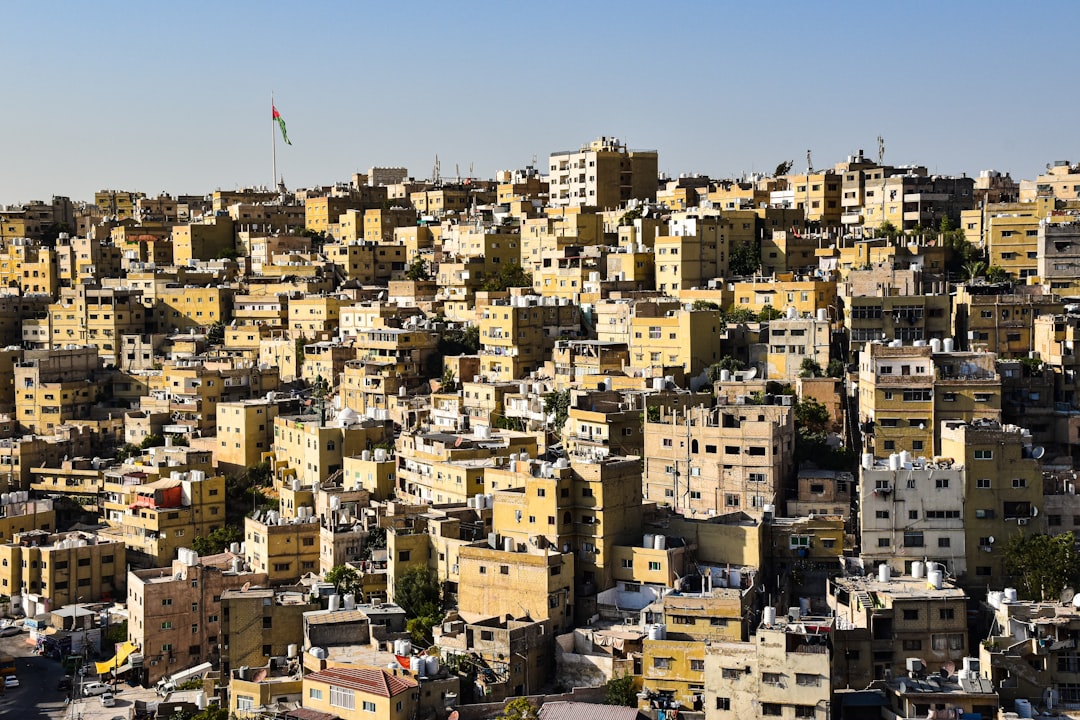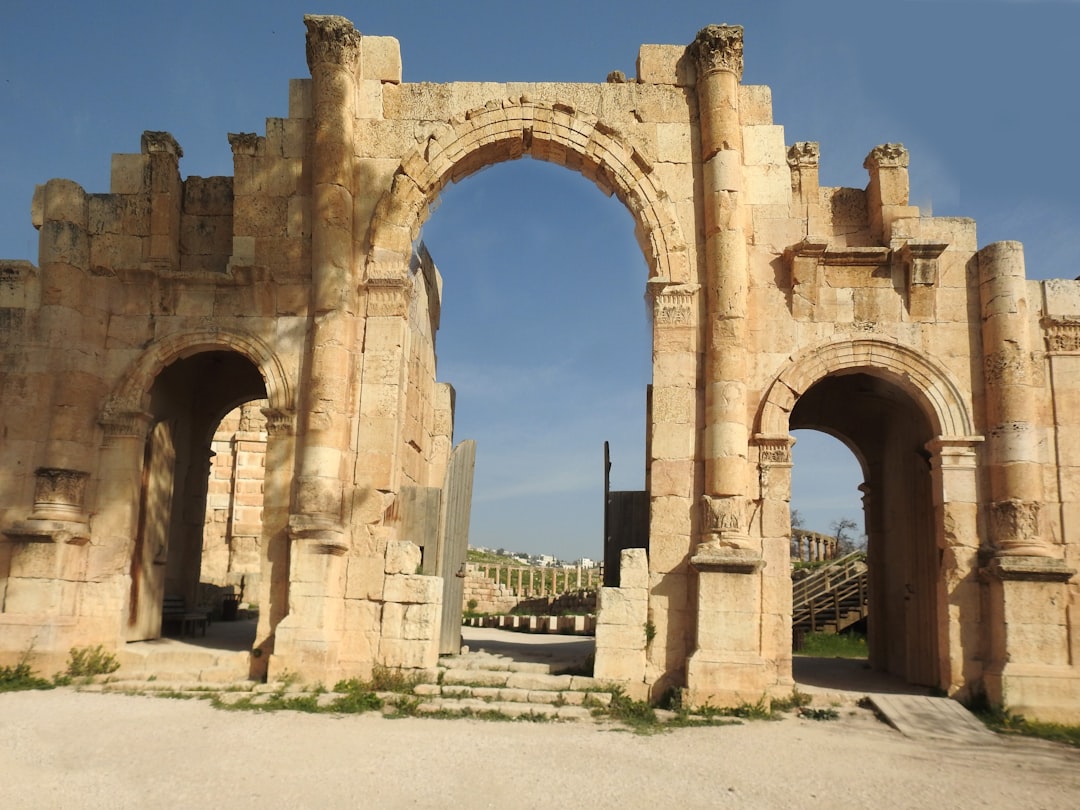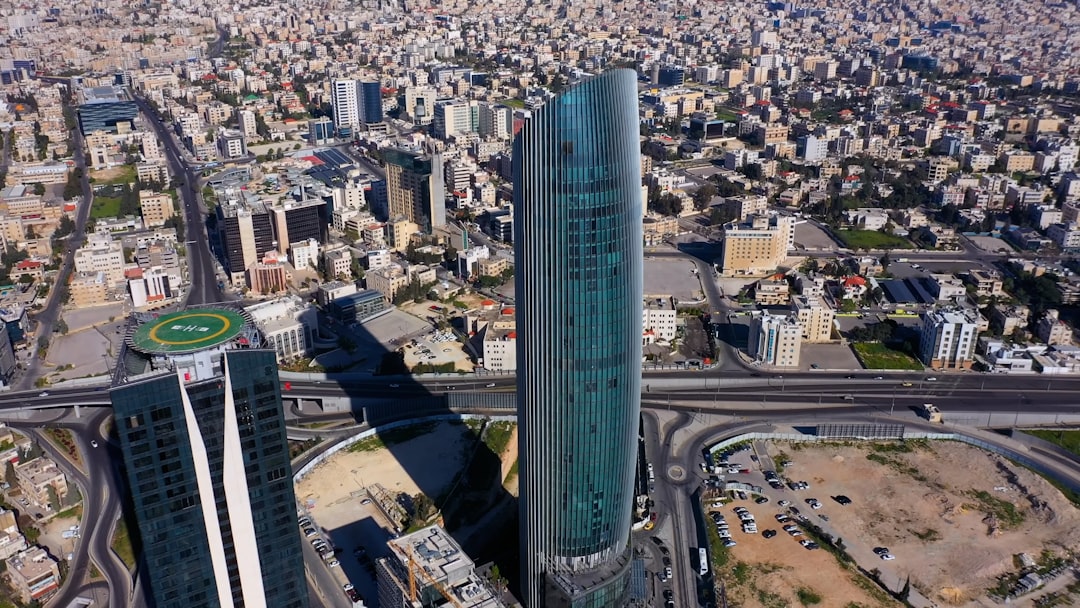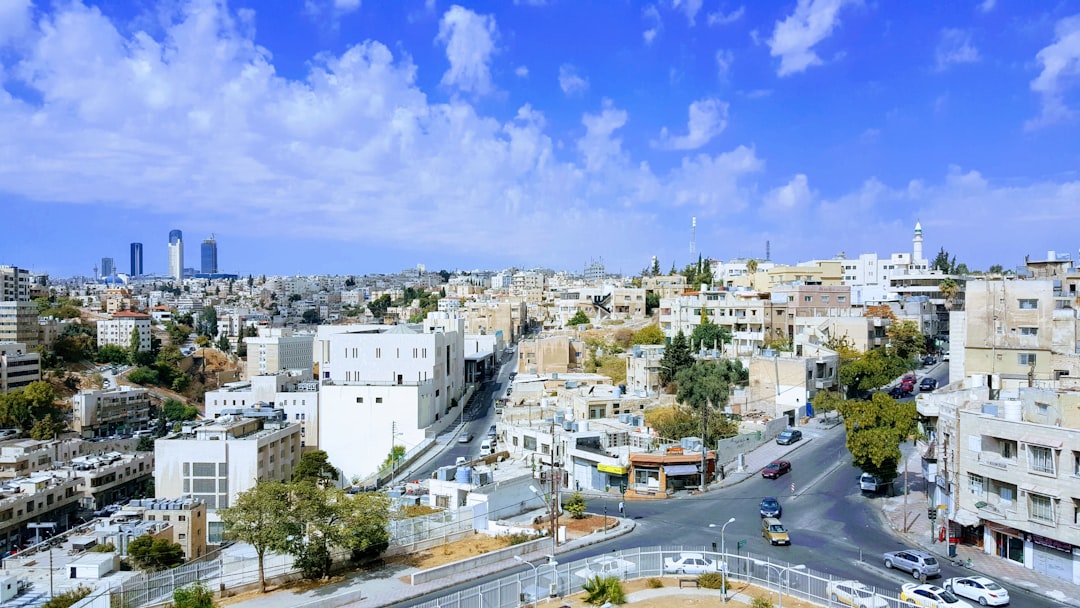Amman, Jordan’s Cosmopolitan Capital: Discovering the Layers of History Beneath the Mountain Views
Amman, Jordan's Cosmopolitan Capital: Discovering the Layers of History Beneath the Mountain Views - Ancient Ruins Meet Modern City Life

At first glance, Amman appears to be a thoroughly modern metropolis with glitzy high-rises, bustling streets, and a cosmopolitan vibe. But beneath the surface of this forward-looking city lies over 7,000 years of history patiently waiting to be uncovered. Wandering through downtown, you’ll stumble upon ancient Roman ruins nestled amidst modern buildings in a fascinating juxtaposition of old and new.
The most impressive of these ruins is the Citadel, which rests on top of Jebel Al-Qala’a, a hill in the center of the city. Dating back over 3,000 years to the Bronze Age, this sprawling complex contains ruins from the Roman, Byzantine, and Umayyad periods. Walking through the colonnaded streets, you’ll feel the city’s ancient heartbeat still pulsing through the stones. Don’t miss the striking Temple of Hercules with its massive columns and intricately carved details.
At the foot of the Citadel lies the Roman Theatre, which was built in the 2nd century CE. With a capacity for 6,000 spectators, it was the largest theatre in the Roman Decapolis, and it’s still used for cultural events today. Scramble up the stone seating to admire the stage’s columns and intricate carvings depicting Roman gods and goddesses.
Along Rainbow Street, just a 10-minute stroll from downtown, you’ll find more glimpses of Amman’s ancient past. Here stand the ruins of a Nymphaeum and other Roman column remnants nestled between art galleries, coffee shops, and boutique hotels. Duck through one of the arched alleys to discover modern street art sprawling across ancient stones.
You can also visit the Amman Archaeological Museum to see artifacts from sites across Jordan spanning the Paleolithic period to the 15th century. Don’t miss the intricate “Ain Ghazal” Neolithic statues with their giant, haunting eyes.
What else is in this post?
- Amman, Jordan's Cosmopolitan Capital: Discovering the Layers of History Beneath the Mountain Views - Ancient Ruins Meet Modern City Life
- Amman, Jordan's Cosmopolitan Capital: Discovering the Layers of History Beneath the Mountain Views - Exploring the Citadel and Other Archaeological Marvels
- Amman, Jordan's Cosmopolitan Capital: Discovering the Layers of History Beneath the Mountain Views - Wandering Through Vibrant Markets and Museums
- Amman, Jordan's Cosmopolitan Capital: Discovering the Layers of History Beneath the Mountain Views - Venturing Outside the City for Scenic Views
- Amman, Jordan's Cosmopolitan Capital: Discovering the Layers of History Beneath the Mountain Views - Sampling Jordanian Cuisine from Street Food to Fine Dining
- Amman, Jordan's Cosmopolitan Capital: Discovering the Layers of History Beneath the Mountain Views - Experiencing Traditional Hammams and Hospitality
- Amman, Jordan's Cosmopolitan Capital: Discovering the Layers of History Beneath the Mountain Views - Admiring Innovative Architecture and Green Spaces
- Amman, Jordan's Cosmopolitan Capital: Discovering the Layers of History Beneath the Mountain Views - Blending Cultures through Music, Art, and Nightlife
Amman, Jordan's Cosmopolitan Capital: Discovering the Layers of History Beneath the Mountain Views - Exploring the Citadel and Other Archaeological Marvels

The mighty Citadel crowning Jebel al-Qala’a is undoubtedly Amman’s foremost archaeological gem. As you climb the winding pathway up to the Citadel’s entrance, you’ll feel the city’s ancient history coming alive all around you. This sprawling complex houses ruins spanning the Bronze Age to the Umayyad period, making it a must-visit for history buffs.
Construction on the Citadel began around 1800 BCE, though most of the existing ruins date to Roman and Byzantine times. As you enter through an imposing stone arch, you’ll find yourself standing amidst a maze of colonnaded streets, plazas, baths, and temples left behind by ancient civilizations.
One highlight is the striking Temple of Hercules, dedicated to the popular Roman god. Giant columns carved with grapevines and acanthus leaves soar 33 feet high, while an intricately-decorated dome rises above the central shrine. Peer closely to see traces of pigment still clinging to the weathered carvings.
For jaw-dropping views over downtown Amman, head to the 4th century BCE Amman Citadel Inscription. This massive 45-foot limestone slab bears the name “Rabbath Ammon”, an ancient name for Amman. Photos can’t capture the exhilarating feeling of standing beside inscriptions carved thousands of years ago.
Don’t miss the small archaeological museum near the entrance, home to artifacts from across Jordan. A personal favorite is the collection of eerie Neolithic statues, including the “Ain Ghazal” statues with huge, haunted eyes.
Beyond the Citadel lies Amman’s other ancient treasures waiting to be explored. The 2nd century Roman Theatre could seat 6,000 spectators for lavish productions. Clambering up the original limestone seating, you can imagine the theatre’s heyday, with crowds cheering and grapes being passed around to nibble.
For a glimpse of Amman’s more recent history, visit the early 20th century Darat al Funun mansion. This charming home-turned-museum houses Palestinian embroidery, contemporary art, and photographs capturing Amman throughout the 1900s.
Wherever you wander, keep an eye out for small ruins integrated into the modern urban fabric. Amman’s ancient sites have been populated for millennia, so delightful surprises like Roman columns or a 500-year-old ottoman hammam steam bath hide in plain sight.
Amman, Jordan's Cosmopolitan Capital: Discovering the Layers of History Beneath the Mountain Views - Wandering Through Vibrant Markets and Museums

Beyond ancient ruins, Amman dazzles with its kaleidoscope of bustling bazaars and markets. Venturing into these crowded corridors, you’ll feel the city’s pulse racing as locals haggle over piles of produce, spices, and handicrafts.
For a sensory overload, plunge into the wares of the covered Souk Jara market off Rainbow Street. Weave past stalls heaped with vivid mounds of cumin, cinnamon sticks, and every spice under the sun. Inhale the mingling scents of fresh thyme and sweet tobacco from old men casually smoking water pipes under yellow lights. Peer into cavernous storefronts crammed with traditional ceramics, copper pots, and tantalizing sweets.
As you pass stack after stack of embroidered fabrics, elegant Arabic calligraphy, and hand-crafted soaps, you’ll want to buy out half the market. Remember to haggle - offer about half the quoted price, then meet halfway. Don’t be shy about walking away from a deal, though shopkeepers may chase after you with a better offer. For a smoother haggling experience, wander towards closing time when vendors want to sell out their wares.
Near the gold souk, find Al-Balad for more of Amman’s coveted antiques, jewelry, and handicrafts. Duck through the low stone archway to enter this former warehouse packed with treasures like Ottoman-era daggers, Bedouin face masks, and musical instruments inlaid with mother-of-pearl.
On Fridays, follow your nose to the bustling Wakalat Street Food Market to indulge in Amman’s scrumptious street eats. Graze your way through luscious labneh dip, mana’eesh (za’atar flatbread), falafel, and baba ghanoush while listening to live Arabic music. Grab a table near the main stage for the best atmosphere.
Saving the best for last, no history aficionado should miss the Jordan Museum, housing artifacts spanning from prehistoric times to the modern Hashemite era. Gaze in wonder at the mesmerizing 120-foot Dead Sea Scrolls, the oldest biblical manuscripts ever found. Marvel over delicate Byzantine mosaics and rare coins mentioned in the Bible.
Don’t rush past the exhibit on Jordan’s villages - you’ll gain insight into Bedouin culture from traditional tents, costumes, and everyday objects. Reflecting Jordan’s ethos of religious tolerance, you can also admire ceramic tilework and calligraphy from mosques, churches, and synagogues across the ages.
Afterwards, stroll through the minimalist King Hussein Park opposite the museum. Let your eyes drink in the soothing fountains, Islamic gardens, and modern sculptures. For delightful views of downtown Amman, take a breather at the elegant pavilion café.
Amman, Jordan's Cosmopolitan Capital: Discovering the Layers of History Beneath the Mountain Views - Venturing Outside the City for Scenic Views
Though the ruins and markets of Amman itself enthral visitors, some of Jordan’s most breathtaking scenery lies just outside the city. Venturing into the surrounding hills and canyons rewards intrepid explorers with unforgettable vistas and epic adventures.
One convenient day trip whisks you to the majestic ruins of Jerash. Located just 30 miles north of Amman, this provincial Roman city is sometimes dubbed the “Pompeii of the East.” Wandering the chariot-grooved Cardo Maximus lined with ionic columns, you’ll feel like you’ve stepped onto a movie set. Clambering onto the 4,000-seat South Theater’s original limestone seating, imagine the spectacle of gladiator battles unfolding before you.
Beyond the imposing Hadrian’s Arch stands the massive Temple of Artemis, dedicated to the goddess of hunting. If your timing’s right, you can catch the Jerash Festival here amidst the ruins each July and August. Nothing beats hearing traditional bagpipe music echoing off 2,000 year-old stones while the summer sun sets.
For a dose of adrenaline, head south to Wadi Mujib to tackle one of Jordan’s most remarkable hikes. This vast canyon boasts over 3,000 feet of elevation change and year-round water flow. The Siq Trail involves navigating boulder obstacles and wading through icy waist-deep pools fed by waterfalls. Your efforts will be rewarded with views of towering sandstone cliffs and untouched wilderness.
To immerse yourself in Bedouin culture, spend a night glamping at one of Wadi Rum’s desert camps. Sleeping under the dazzling canopy of stars in the vastness of Wadi Rum, you’ll feel humbled by the raw, rugged beauty of the desert. Rise early to admire the mesmerizing interplay of light and shadow across the sandstone cliffs and rock bridges.
Venture into the valley’s depths on a jeep tour to encounter millennia of rock carvings and inscriptions. Or opt to ride a camel, the “ship of the desert”, to observe how expertly they traverse the sandy terrain. Before leaving Wadi Rum’s magnificent moonscape, float effortlessly over the dunes on a sunset hot air balloon ride.
For unparalleled views of the Dead Sea’s shimmering azure waters, head to Amman Beach on the northern shore. Float weightlessly in the famously buoyant waters and slather on mineral-rich mud for a natural spa treatment. Then ride the new Panorama Lift up 1,380 feet to see the Dead Sea gleaming below like a gem.
Finally, make time for Madaba, the “City of Mosaics” just 30 minutes from Amman. At the Greek Orthodox Church of St. George, find the oldest map of the Holy Land painstakingly pieced together from two million colorful tiles. Gaze over every detailed biblical site and trade route depicted in this 16th century masterpiece.
Beyond the map, Madaba houses Jordan’s greatest concentration of Byzantine mosaics. Many are masterfully incorporated right into sidewalks and building facades for surprise sightings. Fans of religious art will be enthralled by the mosaic-adorned churches and the Madaba Archaeological Museum's treasures.
Amman, Jordan's Cosmopolitan Capital: Discovering the Layers of History Beneath the Mountain Views - Sampling Jordanian Cuisine from Street Food to Fine Dining

Amman’s food scene excels at bringing Jordan’s rich culinary traditions to the table with flair. From bustling street food markets to elegant restaurants, you’ll find the city’s talented chefs putting creative spins on Jordanian classics. Visitors rave that experiencing Amman’s diverse flavors provides delicious insight into the country’s culture and hospitality.
At the top of every foodie’s Amman itinerary should be the Friday night Souk Jara Street Food Market. The intoxicating aromas draw you in to discover vendors dishing up Jordanian specialties like mana’eesh, juicy grilled meats, and baba ghanoush. A favorite is shawarma from Al Rashid Restaurant’s stand. Their tender chicken and beef shawarma wraps come stuffed with french fries in a heavenly mess you’ll want to recreate at home. Round off your grazing with knafeh, a sweet cheese pastry soaked in aromatic rose water syrup.
For a more upscale food tour, book a table at Sufra. Dining under brick vaults, you’ll be transported to an elegant Jordanian home. Their traditional mezze perfectly balances flavors and textures in dishes like muhammara (spicy walnut dip), fattoush salad, and makdous (stuffed eggplant). Complete the feast with mensaf, Jordan’s national dish of succulent lamb served over a bed of rice and yogurt.
At Hashem Restaurant, you’ll join locals lining up for Amman’s legendary hummus, falafel, and other Palestinian staples. This no-frills spot dishes out fast, fresh meals from an open kitchen since 1952. Their falafels’ crisp shells and fluffy interiors have earned them legions of fans. Order them stuffed into pita pockets for a perfect lunch on the go.
Wild Jordan Café tempts with a chalkboard menu spotlighting Jordan’s boutique food producers. Savor labneh cheese, nutty olive oils, velvety chocolates and preserves crafted from local ingredients. Their Arabic breakfast combines smoky foul mudammas dip, labneh, olives, and fresh baked pita for an Instagrammable start to your day.
For fine dining, head to Fakhr El-Din to experience modern Jordanian cuisine at its finest. Settle into the elegant yet relaxed atmosphere to enjoy creative dishes that riff on tradition. Their colorful beetroot muhammara will make you view this spread in a whole new light. Ribeye aficionados will swoon over their dry-aged beef seared to smoky perfection. With an exceptional wine list and live music, Fakhr El-Din provides an unforgettable night out.
Amman, Jordan's Cosmopolitan Capital: Discovering the Layers of History Beneath the Mountain Views - Experiencing Traditional Hammams and Hospitality
A visit to Amman isn’t complete without experiencing the restorative powers of a traditional hammam, or Turkish bath. Amman boasts many beautifully-preserved hammams dating back 500 years to the Ottoman era. Stepping into the elegant domed chambers, you’ll feel like you’ve entered a lavish sanctuary devoted to relaxation and rejuvenation.
The richly-tiled steam rooms filled with fragrant mint and eucalyptus instantly melt away stress. Unlike a rushed modern shower, the hammam ritual unfolds slowly to create a profoundly cleansing experience. Attendants thoughtfully guide you through the circuit of hot and cold rooms and treatments tailored to your needs.
The deeply-satisfying process begins by luxuriating in the caldarium’s moist heat to open your pores and relax muscles. Then comes a vigorous exfoliating scrub to sweep away dead skin and boost circulation. Next, essential oils like aromatic geranium are massaged into the skin for deep hydration. Finally, cold water closes pores for a radiant glow. Emerging from the hammam, your skin will feel renewed and silky-smooth.
Those seeking a fully traditional experience should visit the 500 year-old Hammam Al-Pasha in downtown Amman. The sound of gently trickling water echoes through chambers treated with natural clay and sweet basil. Talented attendants tend to your every need, providing scrubs and massages using time-honored techniques. Dip into the refreshing cold plunge pool between steam sessions for the complete circuit.
Rainbow Street’s modern take on the hammam at the Al-Qasr Metropole Hotel also promises sublime pampering. Their signature rasul treatment begins with a gentle olive grain scrub. Next, mineral-rich Dead Sea mud is applied to nourish skin. Finally, a cooling cucumber massage transports you to relaxation nirvana.
Beyond hammams, Amman excels at warm-hearted hospitality from chic cafes to local homes. Spending time at Amman’s cafes offers wonderful opportunities to connect with friendly locals over leisurely coffees or teas. Jordanians view hospitalty as a point of pride, so you’ll find yourself chatting comfortably even with perfect strangers.
For the most authentic experience, try joining a home-cooked meal through Be Amman to meet local families. Gathering together over flavorful dishes like maqluba and fresh salads, you’ll gain touching insight into daily life. Laughing with new friends over sweet tea and knafeh creates beautiful memories to cherish.
Amman, Jordan's Cosmopolitan Capital: Discovering the Layers of History Beneath the Mountain Views - Admiring Innovative Architecture and Green Spaces
Beyond ancient sites and bustling markets, Amman delights architecture buffs with its boldly innovative buildings and abundant green escapes. The capital balances preserving Jordan’s heritage with embracing modern design. Both historic homes and daring new structures reveal the city’s openness to blending past with future. Refreshing parks and gardens provide urban oases to reconnect with nature.
King Abdullah Mosque impresses as Jordan's largest and most contemporary mosque. Completed in 1989, its lavish design was inspired by the regal blue domes of Istanbul's mosques. Yet the magnificent prayer hall’s soaring concrete dome required advanced engineering techniques. Beneath the gleaming dome, over 5,000 worshippers gather on Coptic marble floors inlaid with Koranic calligraphy.
Equally eye-catching is the Jordan National Gallery of Fine Arts’ postmodern building. Its geometric protrusions let natural light flood the galleries, while also resembling modern art installations. Inside, exhibits highlight both established and emerging Middle Eastern artists. Don’t miss Jordanian painter Suha Shoman’s stunning abstract canvases.
For a taste of historic Islamic architecture, wander through the restored central Jabal Al-Qal’a neighborhood. Preserved Ottoman-era homes feature intricate carved doorways, shaded courtyards, and mosaic fountains. Peeking through arched windows, it’s easy to imagine vanished ways of life.
Amman’s downtown sports daring modern structures nestled amidst ancient ruins. The Al Hussein Cultural Center’s gleaming metal and glass design contrasts beautifully with the weathered Roman columns integrated along the pedestrian plaza. Nearby, the angular cone of the Central Bank of Jordan makes a striking statement.
Seeking an escape from the bustle? Meander through the terraced gardens of the Royal Cultural Center. Cascading fountains and rows of roses and jasmine will lift your spirits. For panoramic views, head to the Treasure Garden of Amman atop Jabal Al-Qal’a. Inhale the scent of sage as you survey the city’s bewitching blend of old and new.
At the foot of the Citadel, King Hussein Park’s minimalist landscaping provides a soothing urban refuge. Pause at the Rainbow Restaurant's terrace café to enjoy coffee with a side of inspirational city views. Kids will delight in the Children's Museum's hands-on Jordanian heritage exhibits.
Nearby, Al-Ma’wa for Nature and Wildlife rescues native animals and cultivates Jordan’s natural heritage through environmental education. Visit their Wild Jordan Center to meet an orphaned ibex or learn about conservation efforts. The Center’s eco-chic café overlooking a meadow is a hidden gem for leisurely lunches.
Amman, Jordan's Cosmopolitan Capital: Discovering the Layers of History Beneath the Mountain Views - Blending Cultures through Music, Art, and Nightlife
Amman’s cosmopolitan character shines each evening when locals and visitors come together to enjoy the city’s vibrant music, arts, and nightlife scenes. Wandering the lively streets around dusk, you’ll feel how arts and culture help blend Jordan’s heritage with global influences into a captivating fusion.
At the Haya Cultural Centre, you can experience traditional and contemporary creative expression side-by-side. Catch a concert showcasing indigenous instruments like the soulful oud lute or exotic darbuka drum. Then view multimedia installations by up-and-coming Jordanian digital artists that immerse you in their unique visions. The Centre’s mission focuses on facilitating cultural exchange and dialogue across the arts.
Amman Design Week draws talent from across the Middle East to push boundaries in disciplines like architecture, product design, and craft. The annual festival fills galleries and alternative venues with thought-provoking new works. It also empowers communities through participatory projects, like help designing functional street furniture. Attending public talks and workshops lets you engage with designers firsthand to appreciate their innovative processes.
Jordan’s film industry has entered an exciting new wave, with Amman Film Festival providing a platform for independent filmmakers. Screenings at rainbow Street’s arthouse cinema introduce audiences to raw, moving stories from underrepresented voices. The best place to mingle with directors and actors is the latest festival’s nightly award parties. Film fans shouldn’t miss touring state-of-the-art production studios like The Hangar to see behind-the-scenes magic.
For live music, Ambasciata d’Italia occasionally converts into Amman’s hippest concert hall. Their lively Neo-Fest always delivers dynamic shows from alternative rock to indie pop to attract an eclectic crowd. Concert-goers praise the venue’s intimate vibe for connecting the audience with talent from across Europe and the Arab world.
Amman also hosts international music stars, with the Roman Theatre providing a breathtaking open-air stage. Seeing chart-toppers framed by ancient columns makes for an only-in-Jordan experience. Fans fondly recall Diana Karazon becoming the first Jordanian to perform in this historic venue, marking a milestone in the country’s music scene.
By night, Amman’s sidewalk cafes, bars, and shisha lounges come to life. Choose among European-style pubs, bohemian hangouts, or ultra-chic rooftops to sip drinks and people-watch. Leading hotels house most of the city’s high-end nightclubs, where locals and visitors let loose dancing to DJs and pop hits. For a taste of Amman’s underground arts, duck into smoky basements hosting poetry slams and eclectic acts.
Rainbow Street draws those seeking to bar-hop between laid-back bars, hookah spots, and dance clubs pumping Arabic pop. The street echoes late into the night with multilingual conversations and laughter. Friendly Jordanians strike up conversations over draft beers and cocktail specials, eager to welcome foreigners into Amman’s nightlife.
Late-night eateries satisfy post-party munchies with quick shawarma sandwiches or ful medames stew. Or linger outside beloved Sultan Ibrahim cafe, Amman’s oldest coffeehouse, sipping Turkish coffee and smoking fruity shisha. Cafes like this grew from Ottoman-era gathering places into quintessential Jordanian social institutions.
